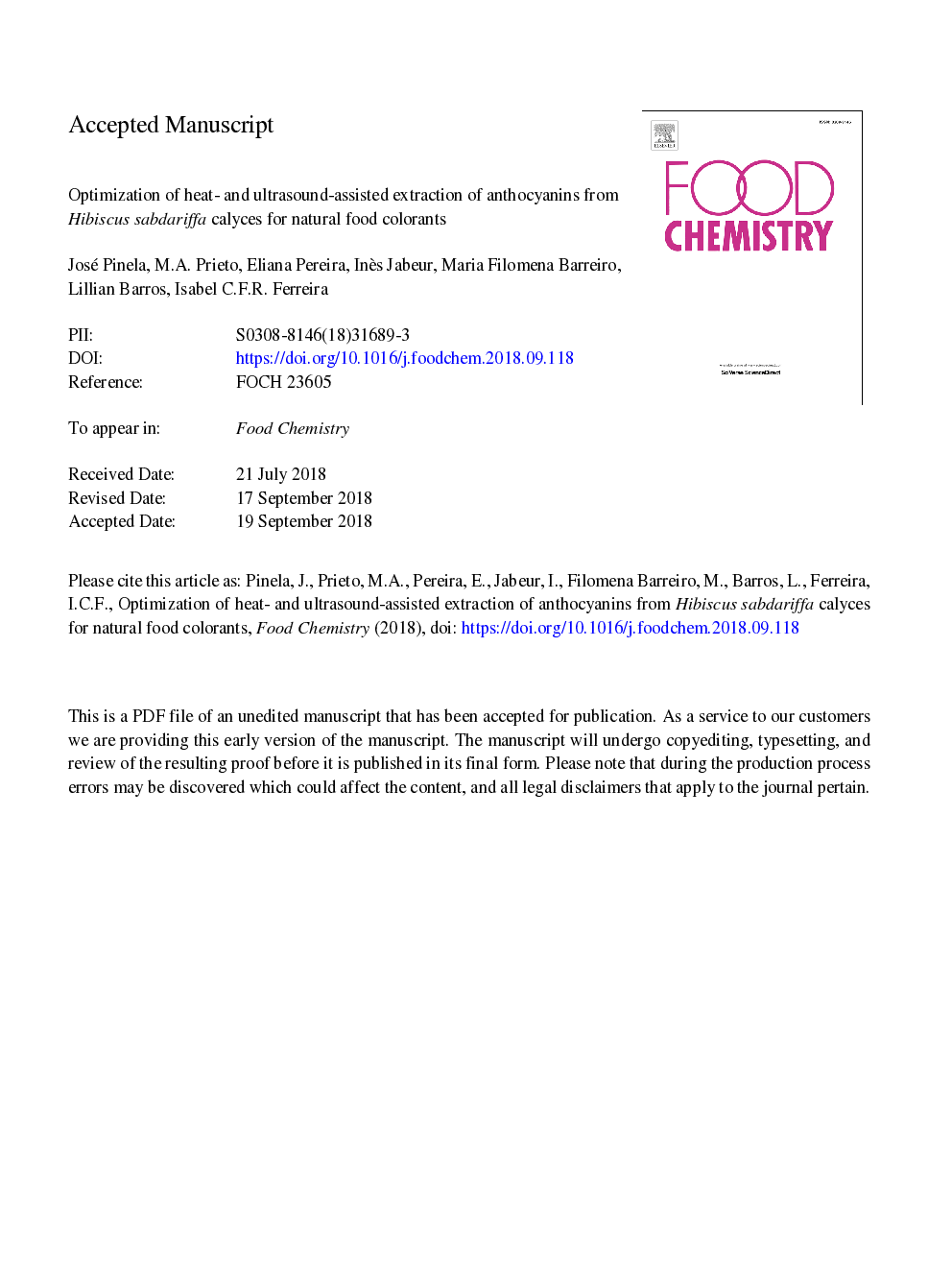| Article ID | Journal | Published Year | Pages | File Type |
|---|---|---|---|---|
| 11027395 | Food Chemistry | 2019 | 42 Pages |
Abstract
Heat- and ultrasound-assisted extraction methods were applied to recover anthocyanins from Hibiscus sabdariffa calyces. The extraction variables, time (t), ethanol proportion (S), and temperature (T) or ultrasonic power (P), were combined in a 5-level experimental design and analysed by response surface methodology for process optimization. The delphinidin-3-O-sambubioside (C1) and cyanidin-3-O-sambubioside (C2) levels were monitored by LC-DAD-ESI/MSn and used as response criteria. The developed models were successfully fitted to the experimental data and used to determine optimal extraction conditions. UAE was the most efficient method yielding 51.76â¯mg C1â¯+â¯C2/g R under optimal conditions (tâ¯=â¯26.1â¯min, Pâ¯=â¯296.6â¯W and Sâ¯=â¯39.1% ethanol, v/v). The dose-response effects of the solid/liquid ratio on the extraction rate were also determined. The anthocyanin levels herein reported are higher than those found in the literature, which support the potential use of H. sabdariffa as a sustainable source of natural colorants with application in different industrial sectors.
Related Topics
Physical Sciences and Engineering
Chemistry
Analytical Chemistry
Authors
José Pinela, M.A. Prieto, Eliana Pereira, Inès Jabeur, Maria Filomena Barreiro, Lillian Barros, Isabel C.F.R. Ferreira,
